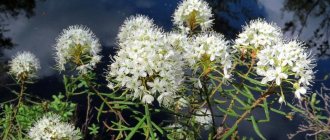- Varietal characteristics
- Popular varieties
- Varvara
- Evening lights
- Mascot
- Lazuli jet
- Lady Di
- Aksima Gold
- Temga
- Ocher Ray
- Elda Orange
- First snow
- Alpine
- Malchish-Kibalchish
- Growing rules
- Sowing seeds in open ground
- Planting seeds for seedlings
- Cuttings
A unique species - a low-growing perennial chrysanthemum - is a bright and lush decoration of the garden. Species diversity allows you to create an unusual composition on the site. And their unpretentiousness in care and cultivation makes it possible to grow such flowers in any climate zone.
Description of low-growing chrysanthemums
Low-growing varieties of the crop include more than 50 varieties with different colors, flowering periods and bush sizes. All dwarf representatives form a crown of a regular spherical shape. The bushes are compact and very dense, the budding is so abundant that the flowers completely cover the surface, starting from the base. The leaves of the plant are dark green, oblong in shape with wavy edges, but they are not visible behind the flowers.
All low-growing varieties form small buds, the diameter of which rarely exceeds 7-9 cm. According to their shape, flowers are divided into double, semi-double and simple.
The dwarf variety of culture in size is:
- short – 20-30 cm;
- medium size – 30-40 cm;
- high – 50-65 cm.
Flowering times vary: early varieties bloom in August, mid-late varieties in September, late varieties in early October. The duration of the biological cycle lasts 30-35 days.
Abundant flowering of the plant is observed only if the basic rules of agricultural technology are observed.
Varieties of low-growing chrysanthemums
Landscape designers recommend creating a mix of varieties of different flowering periods, then the flowerbed will retain its bright, decorative appearance for a long time: from the end of summer until the onset of frost. A review of varieties of low-growing chrysanthemums with different flowering times and colors will allow you to choose the optimal seedling for planting in any region.
Mascot
The talisman is a dwarf chrysanthemum with a spherical bush. Plant height is 30-35 cm. The flowers are small, bright burgundy, semi-double. Their diameter is 5-6 cm. The Talisman variety is used to create multi-tiered borders.
The flowering period begins at the end of August and lasts until the beginning of October.
Elfie White
The low-growing Elf White chrysanthemum is distinguished by small (up to 3.5 cm) flowers. The petals are white, the core is lemon-colored. The bush is compact, spherical, of medium height (45-50 cm). The flowers are simple.
Elf White is a mid-late representative of the culture whose buds bloom in mid-September
Bransky Plum
Bransky Plum is a tall chrysanthemum (up to 70 cm). The round bush is completely covered with large flowers of bright pink color.
Bransky Plum blooms in September
Branbeach Orange
Branbeach Orange is a low-growing, late-blooming chrysanthemum whose biological cycle begins in October. In the Middle and Central zones, the bush often goes under the snow at the peak of flowering. This is one of the frost-resistant varieties with bright orange double flowers of medium diameter (up to 5 cm).
Plant height -55-60 cm
Branbeach Sunny
Branbeach Sunny is a bright yellow, small-flowered, double variety. This is a popular variety with a long flowering period (August-October). The flowers are double, their diameter is about 8 cm.
The height of the Branbeach Sunny bush is 50 cm
Care requirements
Basic care for dwarf chrysanthemums involves a number of activities:
- In the first days, plants that are tender and have not yet matured in their new location require shelter from the sun's rays. Any non-woven material is suitable for this. The structure is constructed in such a way that it does not damage the aboveground part of the plants.
- Low-growing chrysanthemums are very demanding of moisture, so it is important to monitor the condition of the soil - as soon as the surface layer dries, the bushes need to be watered. When watering, it is important that the liquid does not fall on the stems and leaves, which can quickly rot. For irrigation use settled warm water. To soften it, you can add a couple of drops of ammonia.
- Basic care for these flowers involves regular fertilizing. The bushes are fed in early spring - a liquid solution of mullein or humus is poured under the root. At the beginning of the flowering period, the bushes are fertilized with superphosphate - 50 g per 1 square meter. m. This component ensures high-quality and long-lasting flowering of the bushes.
- Pinching is used for weakly bushy varieties and is carried out a week after planting. First, the top of the central stem is plucked off, and after two weeks the apical parts of the side stems are plucked off. When growing varieties of the Multiflora group, pinching is not necessary, since the varieties initially form a spherical shape. For lush and long-lasting flowering on the bushes, faded and dried flower buds should be regularly removed.
- Preparing for winter. Perennial winter-hardy varieties that remain to winter outside are first trimmed, leaving stumps no more than 5 cm high, then sprinkled with a hill of garden soil or humus. Plants that are weakly resistant to cold are trimmed, dug up and placed in a basement or cellar for storage until spring. To prevent such plants from starting to grow prematurely, they are provided with a temperature range of 2-4 °C and low air humidity of 60%.
How to plant low-growing chrysanthemums
The technology for planting low-growing chrysanthemums depends on the method of cultivation. For use as a decorative element in a living space or open veranda, the crop is planted in a container. The time of work in this case does not matter. A flower pot is purchased 5-7 cm wider than the root system, the bottom is covered with drainage, ready-made soil is used or a mixture of peat, humus and sand is made. Canopy cultivation is suitable only for dwarf varieties of chrysanthemums; the crop is perennial; after 3 years, the container is replaced with a larger one.
Dwarf varieties are planted in the spring; multiflora varieties are adapted to temperate climates, but do not tolerate sudden changes. Seedlings are placed on the plot in the spring, when the temperature at night is above zero and the threat of frost has passed. In the Central zone they are targeting the end of May. In autumn (September) you can plant dwarf chrysanthemum only in the southern regions.
A mix of chrysanthemums is often used for vertical gardening.
Selection and preparation of a landing site
Chrysanthemum of low-growing varieties is a light-loving crop; only with a sufficient supply of ultraviolet light is full photosynthesis possible. In the shade, the stems stretch out, the plant looks weak, budding is rare, and the flowers are small. Therefore, for planting, choose a sunny area, protected from the north wind.
Chrysanthemums grow well on loamy, aerated, fertile soil with a slightly acidic or neutral reaction. Areas with stagnant water are not considered. Constantly wet soil is unacceptable for the crop. The site is prepared in advance, it is dug up, weed roots are removed, and wood ash is scattered on the surface. Before starting work, prepare a nutrient substrate from compost, peat and nitrophoska.
Landing rules
The day before planting, dig a hole 40 cm deep, cover the bottom with drainage and fill it with water.
Following actions:
- The seedling is taken out of the transport pot, the earthen lump is not touched. If the root is open, it is immersed in Energen, a growth stimulating agent, for several hours.
- The seedling is placed in the center and covered with nutritious soil mixture.
- Compact and water.
Advice! It is advisable to cover the root circle with mulch.
When planting linearly, maintain a distance of 30-35 cm between chrysanthemums
Watering and fertilizing
Low-growing multiflora chrysanthemums do not respond well to moisture deficiency; the soil must be moist during the growing season. The amount of watering is adjusted depending on the frequency of precipitation. Water stagnation is not allowed, because in frequent cases, root rot is observed. If watering is not adjusted, the bush will die.
Fertilizing is applied throughout the growing season:
- in spring - nitrogen-containing fertilizers and growth stimulating agents;
- at the time of budding - superphosphate and organic matter;
- during flowering - Agricola for flowering plants;
- in autumn – potassium preparations.
Important! Fresh manure cannot be used as fertilizer, since the plant will only grow green mass throughout the entire growing season.
Growing rules
One of the main conditions for the successful cultivation of this flower is the correct choice of planting location - the spherical low-growing chrysanthemum likes to grow in a sunny place where there are no drafts. Excess sunlight will provide the plant with lush and bright flowering.
The soil for such flowers is loose, with good moisture and air permeability and always a low level of acidity. You should not plant flowers in a wetland, as their delicate root system will quickly rot and the plants will die.
Sowing seeds in open ground
This is one of the easiest ways to grow dwarf chrysanthemums, especially if your site already has mother bushes from which you can take planting material. Seeds are collected after the plant has completely flowered. The seeds are mixed with wet sand and placed in the refrigerator. Under such conditions, they will undergo the stratification procedure and will be safely preserved until spring.
The seeds are removed in April, dipped in a solution of potassium permanganate for half an hour, then slightly dried - the disinfecting procedure prevents the risk of disease in young plants.
The area for sowing seeds is prepared in the fall, and sowing is done in the spring, after the last spring frosts have passed - usually the end of April or the beginning of May in the southern zone. For 1 sq. m area, add a bucket of compost (humus), 1 kg of wood ash, superphosphate and potassium salt - 40 g of each component. Then the soil is dug up and leveled.
Seeds are sown in holes or grooves to a depth of no more than 2 cm. When planting, a distance of 20 cm is maintained between seedlings, and 30 cm between rows. The sown beds are watered with a spray bottle to prevent the seeds from being washed out, and at night, if the nights are cool, they are covered with film.
Variety Dryad
Before germination, the seedlings are ventilated, sprayed, and if necessary, weeds are removed. As soon as 2 pairs of leaves appear on them, the bushes are planted separately in a permanent place in the flower garden or front garden.
Planting seeds for seedlings
This growing method is more suitable for regions with cool climatic conditions - the middle zone, the Moscow region. First, seedlings are grown, then they are transplanted into open ground.
Variety Rosalia
Sowing of seeds purchased or collected from your own bush is carried out in the last ten days of February.
Landing technique:
- Seedling boxes or containers with 2-3 cm drainage holes are filled with pebbles or expanded clay. Then they are filled to the top with a nutrient mixture of garden soil, peat, sand and humus in a ratio of 3:1:1:1.
- At a distance of 10 cm, dig holes 2 cm deep, spill with warm water and place seeds in them - 2 pieces each. into each hole. Then the seedlings are sprinkled with a thin layer of earth (1 cm), irrigated with a spray bottle and covered with a transparent film or glass.
- The crops are transferred to a warm place with bright, diffused light and kept at room temperature throughout the entire germination stage.
- After the first pair of leaves appear, the sprouts are planted in separate containers.
- Plants can be transplanted to the site after they have become stronger and reached 20 cm in height.
Cuttings
This method, unlike the previous ones, makes it possible to obtain young bushes with all the varietal characteristics of the mother plant. Usually this procedure is carried out in the spring - in mid or late April. Cuttings with several roots, separated from the mother bush, are used as planting material.
Planting is carried out on a previously prepared area fertilized with peat and humus. Dig holes at a distance of 60 cm from each other, about 35-40 cm deep. One handful of pebbles or expanded clay is placed at the bottom of each hole, sprinkled with fertile soil on top, then watered. The roots of the seedlings are lowered so that the root collar is above the soil surface.
The plants are sprinkled with soil, watered again, and covered with peat or garden soil.
How to properly form low-growing chrysanthemums
Dwarf bush chrysanthemums form a spherical, regular bush shape. You can grow them in their original form or make minor adjustments. Some tips for forming multiflora chrysanthemums:
- during planting, all side shoots are removed from the seedling and the crown is broken off;
- after 2 weeks, the bush is thinned out, cutting off weak shoots in the lower part and re-breaking off a couple of nodes on the peduncles left to create a crown;
- Ideally, the plant should look like a ball, completely covered with flowers; if the leaves or stems extend beyond the boundaries of the given shape, they are removed.
In varieties of low-growing chrysanthemums, the correct shape of the bush is determined at the genetic level, so there is no need for significant correction.
How do low-growing chrysanthemums propagate?
The possibility of generative reproduction depends on the shape of the flower. The seeds are formed in tubular petals in the center. There are no sterile varieties in the varieties of low-growing chrysanthemums. The material is collected at the end of autumn, sown on the plot in the spring or seedlings are grown, in this case the seeds are sown in February.
Low-growing border chrysanthemums grow quickly. The crop can be propagated by dividing the bush if the mother plant has reached three years of age.
Low-growing chrysanthemums are bred using the vegetative method
To do this, cuttings are cut in the spring and placed in fertile soil for rooting. For the winter they are brought indoors, and in the spring they are identified on the site.
Homemade chrysanthemum in a pot. Care and cultivation features
In recent years, growing chrysanthemums in pots has become widespread, and one can even say that the culture of growing chrysanthemums at home has become fashionable.
Chrysanthemum (lat. Chrysánthemum) belongs to the Asteraceae family, it is close to the genus Tansy and Yarrow (an annual and perennial herbaceous plant). It gets its name from the fact that the inflorescences are yellow. It is believed that today there are more than 30 types of chrysanthemums, their homeland is China and Japan, and is widespread in Asia.
For growing chrysanthemums at home, the most suitable are low-growing varieties (height 20-70 cm), or very small, dwarf varieties (height 15-20 cm).
The leaves of the chrysanthemum are light green, simple, grow in an alternate order, with jagged edges, all different in size, and outwardly similar to oak leaves. Chrysanthemum flowers are painted in all possible colors and shades, they can be either simple or double or semi-double.
The flowers themselves are small-flowered (up to 2 cm in diameter), collected in a basket, or, conversely, large-flowered (2-5 cm in diameter). Flowers begin to bloom from late summer until almost the first snow.
Among the wide variety of chrysanthemums, flower growers distinguish low-growing mulberry-leaved varieties (Red Charm, Yellow Charm, etc.), among them one can distinguish lush bushes with abundant flowering of small flowers, with a cascade form of a bush (White Cascade, Pink Cascade), with large-flowered flowers, and shrubby type of bush.
In addition, varieties of Korean chrysanthemum (Navare, Stella, etc.) are popular; they differ from all varieties; the bush has a spherical shape, which is why they are called spherical.
Indian chrysanthemums on sale (White Crystal, White Swifty, Saba, etc.). The bush is not very branched, up to 50 cm high.
Caring for home chrysanthemum
Before you get yourself a chrysanthemum, think about whether you can provide the flower with a temperature regime.
The plant does not like heat; the optimal temperature for active growth and flowering is 10-15 degrees Celsius, and preferably no higher than 22. If your room is hot, your flower will wither and die.
In winter, maintain the temperature at least 5-8 degrees, while in open ground the plant survives even frosts, and this indicates its endurance and hardening.
Choose a location so that the plant has enough sun (but not direct rays), with the possibility of ventilating the room, perhaps on a cool balcony on the west side.
Homemade chrysanthemum in a pot photo:
Chrysanthemums especially need good watering, during flowering (twice a week), the rest of the time, water when the top layer of soil is dry, do not flood the plant.
A couple of times a week you can spray a plant located in a closed, dry room, but if it is on a cold and not well-lit balcony, there is no need for additional moisture.
For active growth and good long-term flowering, the plant needs high-quality soil; use a mixture of sand, humus and turf soil (mixing everything 1:1:2). Make sure that the soil is not acidic (the plant will develop poorly and ultimately will not bloom).
If you want to see beautiful and long-lasting flowering, in addition to good soil composition, you need to fertilize at least once every 14 days with mineral fertilizers with such important components as potassium, phosphorus and nitrogen (2:3:1).
In winter, the chrysanthemum rests; during this period it must be moved to a cool place. If it is a balcony, you need to trim (10-15 cm). The air temperature is not lower than 3-8 degrees Celsius.
Water a third of the pot as the soil dries (but not more than once a month). If there is no balcony, you can leave the plant indoors by cutting off dry branches, leaves, and buds.
Watering once every two weeks.
We recommend viewing: Indoor chrysanthemum. Planting and care
With the beginning of spring, the plant awakens; it is necessary to transplant the flower into a new, larger pot (an annual procedure due to the growth of the root system).
In addition to the usual soil mixture, you can add chicken droppings or manure (if you did this, you should not additionally fertilize the soil in the next month). The plant is placed on a lighted balcony.
If you stick to the beautiful shapes of decorative flowerpots, you need to give the desired shape to your plant (pinch out new shoots).
Chrysanthemum propagation
You can not only save a chrysanthemum and give it a new life, but also propagate it yourself by dividing the bush or cuttings.
The best method is division . The plant produces many young shoots (up to 4-6). You need to prepare containers with soil and carefully separate the shoots from the root system. Further care is the same as for adult plants; with proper care in the first year, the flower will delight you with buds.
The cutting method takes longer. You need to cut cuttings 8-10 cm long and treat them with growth accelerating preparations (kornevin, heteroauxin). After planting, the cuttings are watered and a mini-greenhouse is created, but we must not forget to ventilate. When the plant reaches 15-18 cm, it is necessary to pinch its top for further formation of the bush.
Pests and diseases of chrysanthemum
Like all plants, chrysanthemum is no exception, and it is also loved by pests such as spider mites, aphids, and thrips. If cobwebs, larvae, or darkening of leaves are detected, it is necessary to wash the plant with a soap solution or pest control preparations (topaz, karbofos).
If a gray coating (powdery mildew) appears on the leaves, treat the plant with a fungicide (occurs when there is high humidity in the room). And if you notice fluffy spots on the foliage, this disease is gray rot, it affects the plant, causing redness and blackening of the leaves. Treat with a foundation solution and ventilate the room.
To properly care for your home chrysanthemum, follow these simple recommendations, and your plant will delight you all fall with lush flowering and bright colors of what seems like a bygone summer.
[Total: 8 Average: 3.4/5]
Source: https://komnatnue-rastenija.com/domashnyaya-xrizantema-v-gorshke-uxod-i-osobennosti-vyrashhivaniya/
How do low-growing chrysanthemums overwinter?
If a chrysanthemum grows in a flower pot, it is taken out to the balcony or terrace for the summer, but it overwinters in stationary conditions. You can transplant the plant from open ground into a container, bring it into a greenhouse, or leave it on a closed veranda if the room temperature does not drop below -7 0C.
Low-growing varieties of chrysanthemums are frost-resistant enough to remain in the flowerbed during the cold season and not create unnecessary problems with replanting.
After choosing a wintering method, the following activities are carried out:
- When the chrysanthemum has faded, shorten the flower stalks by 10-15 cm;
- Remove weak shoots in the center that thicken the bush;
- A preventive examination is carried out; if there are signs of disease, the affected part is removed and the plant is treated with an antifungal agent.
- Approximately at the end of October they are fed with phosphorus and potassium.
- Cover the root circle with mulch, install arcs, and cover them with covering material.
Approximately 15 cm should be left from the tops of the stems to the installed arches.
From a cutting to a flowering ball
In order for the cutting to take root well and grow, the following conditions will need to be met:
- Abundance of light - the place for growing plants should be well lit, the length of daylight hours should be more than 14 hours.
- Temperature – about 20-22°C
- Timely watering - do not allow the substrate to become waterlogged or dry out.
With good care, the cutting grows quickly. As mentioned earlier, the spherical chrysanthemum does not need pinching. But still, some gardeners believe that such manipulation will not hurt, as it makes the bush denser. Accordingly, when flowering, more buds will appear on it. If you agree with this position, then pinch out the multiflora after 4-6 leaves appear.
Rooted cuttings can be planted in open ground after the end of night frosts. The sooner this is done, the larger the “ball” will be able to grow by autumn. And the more gorgeous the flowering will be!
Diseases and pests of low-growing chrysanthemums
Low-growing varieties are attractive to gardeners because they have strong immunity. Subject to proper growing conditions, plants rarely get sick. Problems arise only in overly moist soil. In this case, reduce watering or transplant the bush to a more suitable place.
Among the pests, slugs pose a threat to low-growing seedlings. They are removed manually or using Metaldehyde.
The insecticide is placed near all chrysanthemums within a radius of 5 m
If there are anthills on the site, aphids may appear on the bushes; they get rid of them using Spark.
It is necessary to treat the soil and above-ground mass in the spring and at the first signs of pest appearance
Photo of dwarf chrysanthemums
Low-growing chrysanthemums come in a variety of colors and flower shapes. Several photos of varieties popular in ornamental gardening will help you choose a flower suitable for a particular region.
Multiflora Ursula Red
Bush variety with a spherical crown Branfountain Purple
Coral member of the Branfontain Salmon group
Low-growing variety Brandove White
Multiflora of Brangala
Border variety Sund Cream
Ampel variety Maragon
Low-growing bush variety Green
What plants are combined with?
Low-growing chrysanthemums are quite self-sufficient, so they are most often used in single plantings. But it is permissible to combine them with other colors:
- zinnia;
- calendula;
- asters of the low-growing group;
- Snapdragon;
- cosmos;
- coleus;
- balsam;
- marigolds and others.











